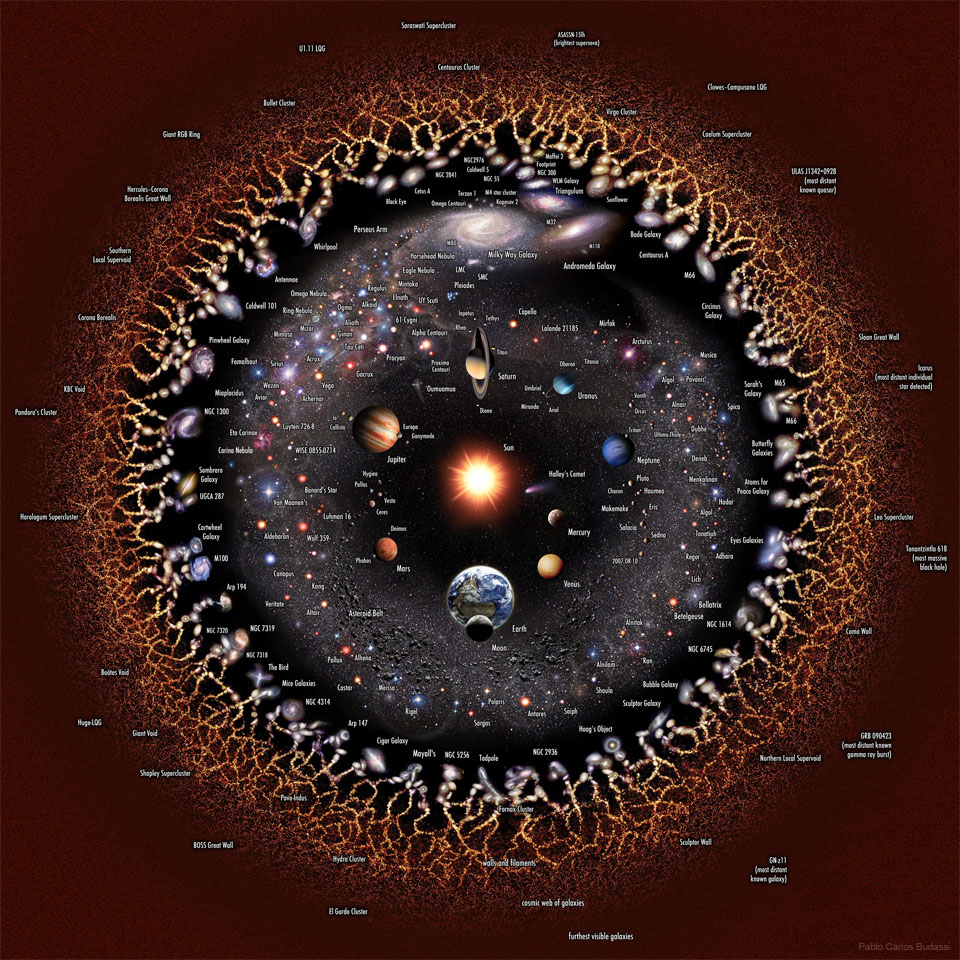2022年3月16日
The Observable Universe
Illustration Credit & Licence: Wikipedia, Pablo Carlos Budassi
Explanation: How far can you see? Everything you can see, and everything you could possibly see, right now, assuming your eyes could detect all types of radiations around you — is the observable universe. In light, the farthest we can see comes from the cosmic microwave background, a time 13.8 billion years ago when the universe was opaque like thick fog. Some neutrinos and gravitational waves that surround us come from even farther out, but humanity does not yet have the technology to detect them. The featured image illustrates the observable universe on an increasingly compact scale, with the Earth and Sun at the center surrounded by our Solar System, nearby stars, nearby galaxies, distant galaxies, filaments of early matter, and the cosmic microwave background. Cosmologists typically assume that our observable universe is just the nearby part of a greater entity known as “the universe” where the same physics applies. However, there are several lines of popular but speculative reasoning that assert that even our universe is part of a greater multiverse where either different physical constants occur, different physical laws apply, higher dimensions operate, or slightly different-by-chance versions of our standard universe exist.
Available: High res image version with readable annotations | Clickable annotation version
Tomorrow’s picture: open space
可观测的宇宙
图示提供与授权: Wikipedia, Pablo Carlos Budassi
说明: 你能看多远呢?假设你的双眼能侦测到周围所有形态的辐射,目前所有你能见到及可能见得的一切,构成了可观测的宇宙。在可见光波段,可见到最遥远的光来自宇宙微波背景,而138亿年前发出这些微波的宇宙,如同一团不透光的浓雾。我们周围的部分微中子(中微子)和重力波,来自更外围的地方,但是人类目前还没有能侦测它们的科技。这张主题影像以越来越紧收的尺标呈现可观测的宇宙,其中位在中心的地球和太阳,周围环拱着太阳系、邻近恒星、邻近星系、遥远星系、丝缕状的早期物质及宇宙微波背景。宇宙学家通常假设我们可观测的宇宙只是更大、相同的物理定律仍然适用的大宇宙之一部分。不过,有数个很流行但高度揣测性的学说宣称,纵使是这个大宇宙,也是更大的多重宇宙的一部分;而在这个多重宇宙里,或者其他宇宙有不同的物理常数、适用不同的物理定律、具有更高的维度,或者其他宇宙只是和我们所在的标准宇宙有随机性的微小差异。
可下载: 上图加上注解的高解析版本 | 点选后再加注解的版本
明日的图片: open space



